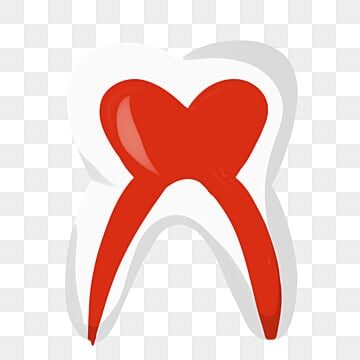Cataracts, a common eye condition, can significantly impact a person's vision and overall quality of life. In this article, we will delve into the causes, symptoms, and diagnosis of cataracts, providing readers with a comprehensive understanding of this condition. We will also explore the various treatment options available, including surgical procedures, medications, and lifestyle changes. Additionally, we will discuss preventive measures and management strategies, offering lifestyle tips, emphasizing the importance of proper eye care, and shedding light on ongoing research in the field. Whether you are seeking information for personal knowledge or for a loved one's well-being, this article aims to provide a comprehensive guide to cataracts and empower readers to make informed decisions about their eye health.
1. "Understanding Cataracts: Causes, Symptoms, and Diagnosis"
Cataracts are a common eye condition that primarily affects older adults, although they can occur in people of all ages. Understanding the causes, symptoms, and diagnosis of cataracts is essential for early detection and effective treatment.
Causes:
Cataracts occur when the lens of the eye becomes cloudy, leading to a progressive loss of vision. The exact cause of cataracts is still not fully understood, but several factors contribute to their development. The most common cause is age-related changes in the lens proteins, causing them to clump together and cloud the lens. Other factors that increase the risk of cataracts include prolonged exposure to ultraviolet (UV) radiation, certain medical conditions such as diabetes, smoking, excessive alcohol consumption, and long-term use of corticosteroid medications.
Symptoms:
Initially, cataracts may not cause any noticeable symptoms. However, as the condition progresses, individuals may experience the following:
1. Blurred or hazy vision: Vision becomes progressively cloudy, making it difficult to see clearly. This cloudiness can impact both near and distance vision.
2. Sensitivity to light: Individuals with cataracts often become more sensitive to bright lights. Glare from headlights, sunlight, or lamps may cause discomfort and difficulty seeing.
3. Reduced night vision: Cataracts can affect the ability to see in dim lighting, making it challenging to drive at night or navigate in low-lit environments.
4. Colors appear dull: Cataracts can cause a yellowing or browning of vision, making colors appear less vibrant or faded.
Diagnosis
2. "Exploring Treatment Options for Cataracts: Surgery, Medications, and Lifestyle Changes"
Cataracts are a common eye condition that affects millions of people worldwide, especially those aged 60 and above. While age is a significant factor contributing to cataract development, other factors like smoking, diabetes, prolonged exposure to sunlight, and certain medications can also increase the risk. In this section, we will explore the various treatment options available for cataracts, including surgery, medications, and lifestyle changes.
1. Surgery: When cataracts significantly impair an individual's vision, surgery is often the recommended course of action. Cataract surgery involves removing the clouded lens and replacing it with an artificial intraocular lens (IOL). This procedure is generally safe and highly effective, with a success rate of over 95%. The surgery is typically performed on an outpatient basis and does not require a lengthy hospital stay. Most patients experience improved vision shortly after the surgery, with full recovery within a few weeks.
2. Medications: While medications cannot reverse or cure cataracts, certain eye drops may help alleviate symptoms associated with cataracts, such as dry eyes or inflammation. These drops can provide temporary relief and improve the overall comfort of the patient. However, it is important to note that these medications do not treat the cataract itself, and surgical intervention remains the definitive treatment option.
3. Lifestyle Changes: Making certain lifestyle changes can help slow down the progression of cataracts and reduce the risk of developing them. Protecting your eyes from harmful ultraviolet (UV) rays by wearing sunglasses or a wide-brimmed hat when outdoors can be beneficial. Additionally,
3. "Prevention and Management of Cataracts: Lifestyle Tips, Eye Care, and Future Research"
Cataracts, a common eye condition that affects millions of people worldwide, can significantly impair vision and quality of life. While treatment options are available, prevention and management play crucial roles in reducing the risk of developing cataracts and optimizing overall eye health. This section will explore lifestyle tips, eye care practices, and ongoing research in the field to prevent and manage cataracts effectively.
1. Lifestyle Tips:
Maintaining a healthy lifestyle can significantly contribute to preventing cataracts. Here are some essential lifestyle tips that can help minimize the risk:
a. Balanced Diet: Consuming a diet rich in antioxidants, vitamins, and minerals is beneficial for eye health. Including foods like fruits, vegetables, nuts, and fish can provide essential nutrients that protect against cataract formation.
b. Quit Smoking: Smoking has been linked to an increased risk of developing cataracts. Quitting smoking not only benefits overall health but also helps reduce the likelihood of developing this condition.
c. Limit Alcohol Consumption: Excessive alcohol consumption can contribute to cataract development. Moderation is key, and limiting alcohol intake can help lower the risk.
d. Protecting the Eyes: Wearing sunglasses that offer UV protection and a wide-brimmed hat can shield the eyes from harmful UV rays. Additionally, using safety goggles while performing certain activities like welding or operating machinery can prevent eye injuries that could potentially lead to cataracts.
2. Eye Care Practices:
Regular eye care and preventive measures can significantly aid in managing cataracts. Here are some important eye care practices to follow:
a. Routine Eye Ex

